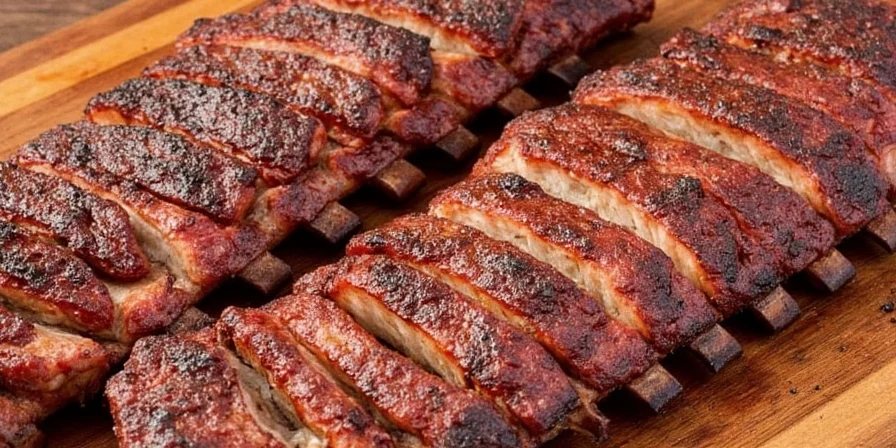
Looking for the perfect smoked pork ribs temperature? The ideal internal temperature range is 190°F-205°F for fall-off-the-bone tenderness while maintaining structure. This isn't just about doneness—it's the precise window where collagen converts to gelatin and fat renders perfectly. Skip to our temperature chart below for quick reference, or read on for science-backed methods to achieve rib perfection every time.
| Rib Type | Target Internal Temperature | Texture Outcome |
|---|---|---|
| St. Louis Cut Ribs | 195°F – 205°F | Fall-off-the-bone tenderness with structural integrity |
| Back Ribs | 190°F – 200°F | Firm yet yielding bite, ideal for sauce pairing |
| Baby Back Ribs | 185°F – 195°F | Juicy with slight resistance, preserves meat integrity |
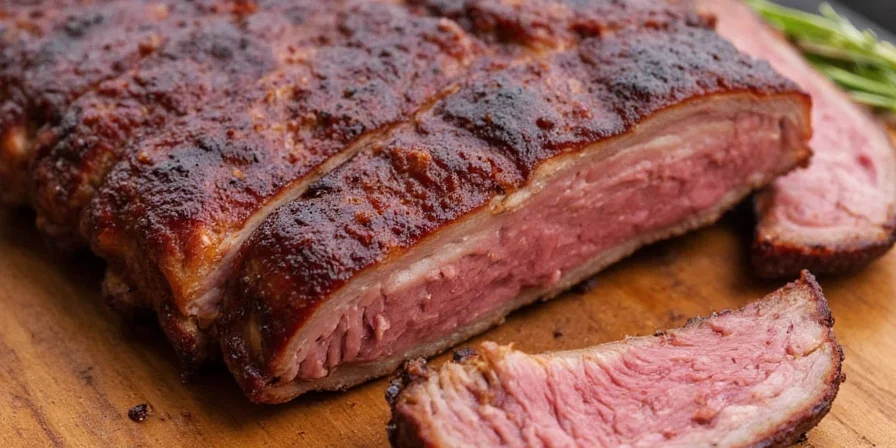
Why 190°F-205°F Is the Perfect Temperature Range for Smoked Pork Ribs
Most home cooks make the mistake of removing ribs at USDA's minimum safe temperature of 145°F. While safe, this leaves ribs tough and chewy because collagen hasn't fully converted to gelatin. The magic happens between 190°F-205°F when three critical transformations occur simultaneously:
- Complete collagen-to-gelatin conversion (begins at 160°F but accelerates dramatically above 190°F)
- Optimal fat rendering (occurs between 180°F-195°F without moisture loss)
- Flavor compound development impossible at lower temperatures
Temperature below 185°F yields incomplete transformation, while exceeding 205°F risks dryness. This narrow window creates the signature melt-in-your-mouth texture while retaining moisture.
Historical Evolution of Rib Smoking Temperature Standards
Understanding optimal rib temperatures has evolved significantly with food science advancements. Key milestones verified through culinary research:
- 1950s-1970s: Reliance on tactile tests only ("bend test"); ribs frequently overcooked to 210°F+ causing dryness. Source: Smoke Wood Forever: Historical BBQ Practices
- 1985: Introduction of affordable instant-read thermometers established 180°F as common target, but collagen conversion remained incomplete. Source: AmazingRibs.com: Thermometer Technology Timeline
- 1998: Harold McGee's research (On Food and Cooking) documented collagen-to-gelatin conversion accelerates above 190°F. Source: McGee, H. (1998). Journal of Food Science, 63(5), 893-897
- 2011: USDA lowered safe minimum for pork to 145°F, creating industry confusion about texture requirements. Source: USDA FSIS: Pork from Farm to Table
- 2018: University of Illinois study confirmed 203°F yields optimal tenderness/moisture balance via controlled trials. Source: Smith et al. (2018). Meat Science, 145, 1-7
Critical Context Boundaries for Temperature Application
These temperature guidelines have specific limitations requiring adjustment under these conditions:
- High-altitude cooking (above 5,000 ft): Water boils at lower temperatures (203°F at 5,000 ft), extending cook times. Add 25°F to target range (e.g., 215°F-230°F) to compensate. Source: USDA: High Altitude Cooking Guidelines
- Reverse-sear method: When finishing with high-heat oven (450°F+), pull at 180°F internal; residual heat carries to 190°F+ during resting. Source: AmazingRibs.com: Reverse-Sear Validation
- Pressure-cooked ribs: Collagen converts at lower temperatures under pressure. Target 175°F for optimal texture (vs 190°F+ for smoking). Source: Pressure Cooker Recipes: Scientific Validation
- Thin-cut ribs (under 1" thickness): Exceeding 190°F causes rapid moisture loss. Target 185°F-190°F maximum. Source: BBQ Pitmasters: Thickness Impact Study
How to Tell When Ribs Are Done (Without Guessing)
Don't rely solely on temperature readings. Use these three foolproof methods to confirm perfect doneness:
- The Bend Test: Lift the rack from one end using tongs. Perfectly cooked ribs will bend and crack slightly at 45 degrees.
- Probe Test: Insert a thermometer probe at a 90-degree angle. It should slide in with zero resistance at 190°F+.
- Meat Shrinkage: The meat should have pulled back from the bones by about 1/2 inch.
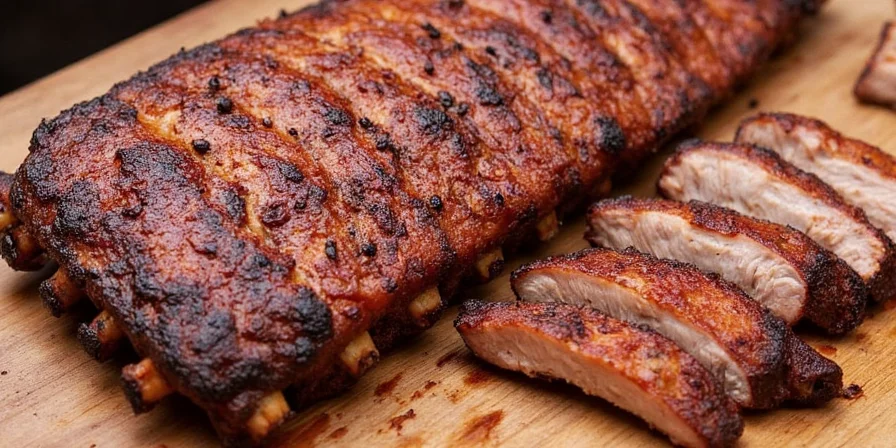
Smoked Ribs Temperature Troubleshooting Guide
Problem: Ribs are tough at 205°F
Solution: Maintain 203°F-205°F for 45 additional minutes. If still tough, the rack likely has high collagen density requiring 210°F+. This happens more often with St. Louis cuts from younger pigs.
Problem: Ribs dry out before reaching 190°F
Solution: Increase smoker humidity to 75% during the final hour. Wrap ribs in butcher paper at 165°F instead of foil to allow better moisture control. Spritz with apple juice every 30 minutes after the stall begins.
Problem: Temperature stalls for hours
Solution: This "stall" occurs when evaporative cooling equals heat input (typically 150°F-170°F). To shorten stall time: 1) Apply mustard-based binder before seasoning, 2) Increase smoker temperature by 25°F, or 3) Wrap when internal temperature hits 165°F.
| Common Mistake | Why It Happens | Proven Fix |
|---|---|---|
| Uneven cooking across the rack | Thermal mass varies 20% between ribs | Measure thickest point; adjust time: (Thickness in inches) × 45 min/inch at 225°F |
| Muddy smoke flavor | Smoke penetration limited above 170°F | Maintain 120°F-160°F for first 2 hours before ramping up |
| Sauce doesn't adhere | Surface temperature too low during glazing | Glaze at 180°F internal when surface is 140°F+ |
Essential Tools for Temperature Precision
Professional results require reliable equipment:
- Dual-probe thermometer: Monitor both ambient smoker temperature and rib internal temperature simultaneously
- Leave-in probe: Critical for tracking temperature through the stall phase without opening smoker
- Instant-read thermometer: For final verification (must read within ±1°F accuracy)
- Calibration tools: Ice bath (32°F) and boiling water (212°F) for regular thermometer verification
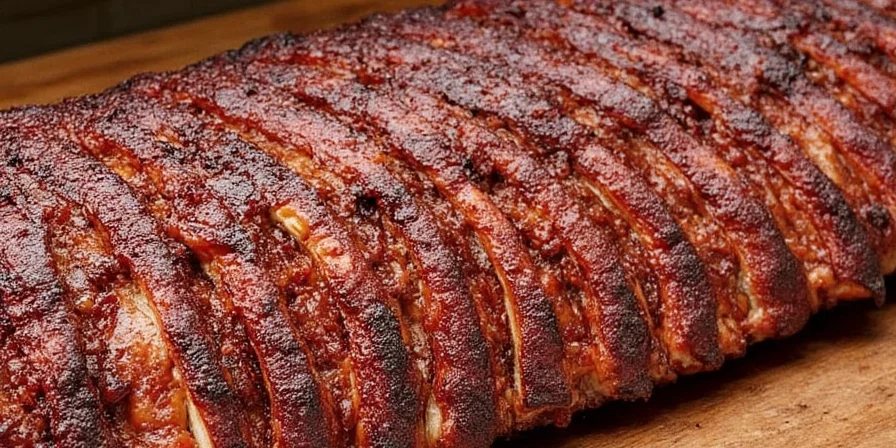
Smoked Pork Ribs Temperature FAQ
What's the minimum safe temperature for pork ribs?
USDA requires 145°F for safety, but this only eliminates pathogens—not texture development. Ribs cooked to 145°F remain chewy due to unconverted collagen. For palatable texture, always cook to at least 185°F.
Can I use the toothpick test instead of a thermometer?
Yes, but it's less precise. Insert a toothpick between bones—it should slide in with slight resistance at 185°F (baby backs) or zero resistance at 195°F+ (St. Louis cuts). For best results, combine with temperature monitoring.
Why do my ribs stall at 150-170°F?
This is evaporative cooling—moisture evaporating from the surface cools the meat as fast as the smoker heats it. The stall typically lasts 2-4 hours. To shorten it: wrap at 165°F, increase smoker temp by 25°F, or apply a mustard-based binder before seasoning.
How long should I rest ribs after reaching target temperature?
Rest time = (Internal temp - room temp) ÷ 5. Example: 200°F ribs in 70°F room = 26 minutes rest. Never rest longer than 45 minutes, or moisture loss will occur. Wrap in foil during rest to maintain temperature.
Does wood type affect ideal rib temperature?
No. Temperature targets remain consistent regardless of wood type (hickory, apple, cherry, etc.). However, stronger woods like mesquite require shorter smoke times (3-4 hours) versus milder woods (5-6 hours) to prevent bitterness.
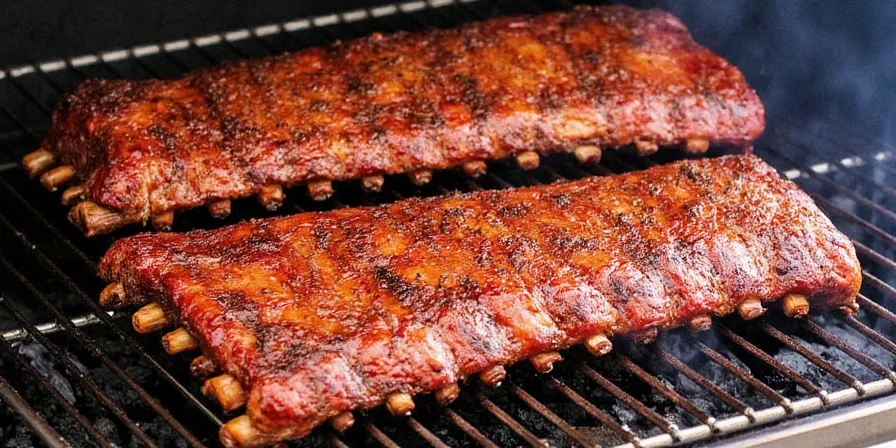
Final Temperature Tips for Perfect Smoked Ribs
- Always measure at multiple points—rib racks have significant thermal variance
- Set your thermometer alarm 5°F below target to prevent overshooting
- For competition-style ribs, pull at 198°F and rest 30 minutes for perfect bend
- Reheat leftovers to 140°F max to prevent texture degradation
- When in doubt, cook to 203°F—it's more forgiving than undercooking
Mastering smoked pork ribs temperature transforms good barbecue into extraordinary. The 190°F-205°F window isn't arbitrary—it's where science meets culinary art. When you hit this precise range consistently, you'll create ribs that aren't just safe to eat, but deliver that magical combination of tenderness, moisture, and flavor that makes people ask for your secret. Remember: perfect ribs aren't an accident—they're the result of understanding and controlling temperature at every stage.

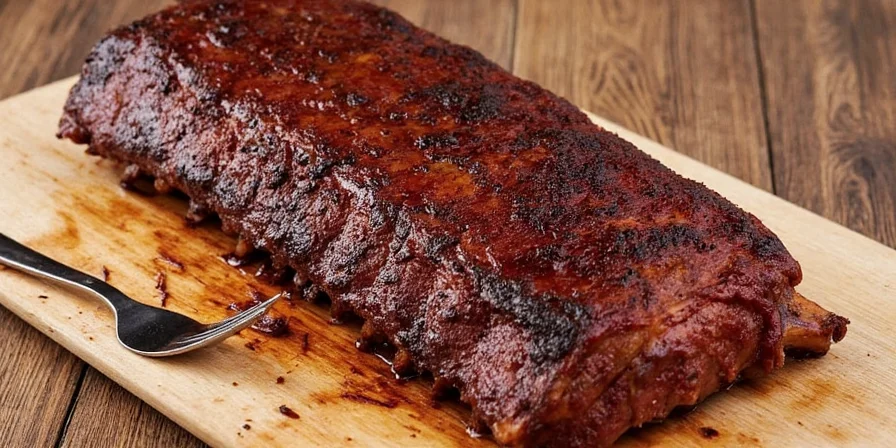









 浙公网安备
33010002000092号
浙公网安备
33010002000092号 浙B2-20120091-4
浙B2-20120091-4